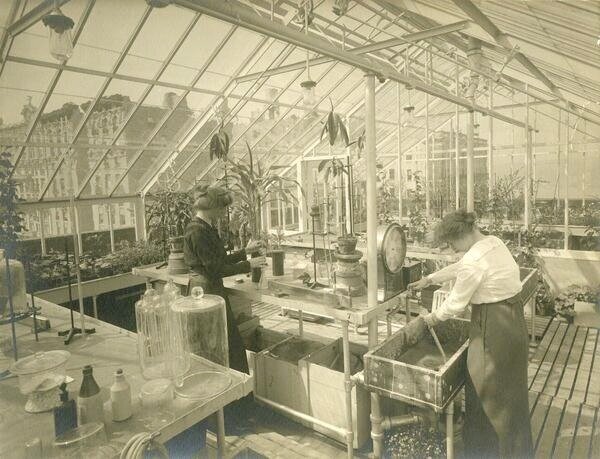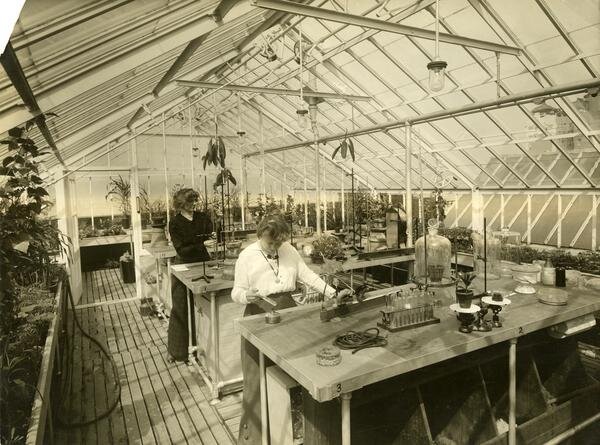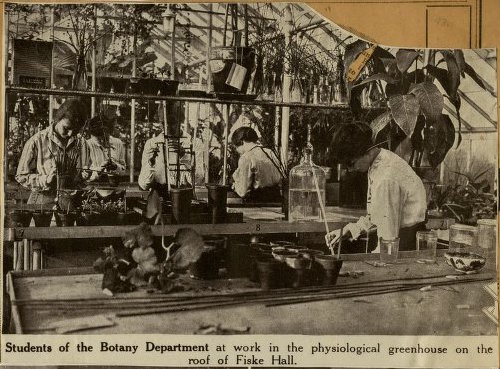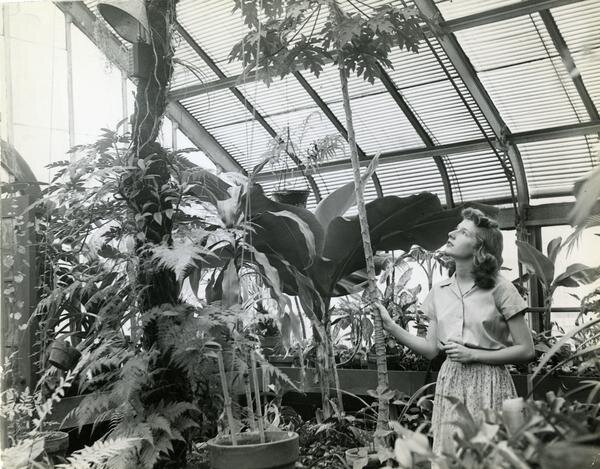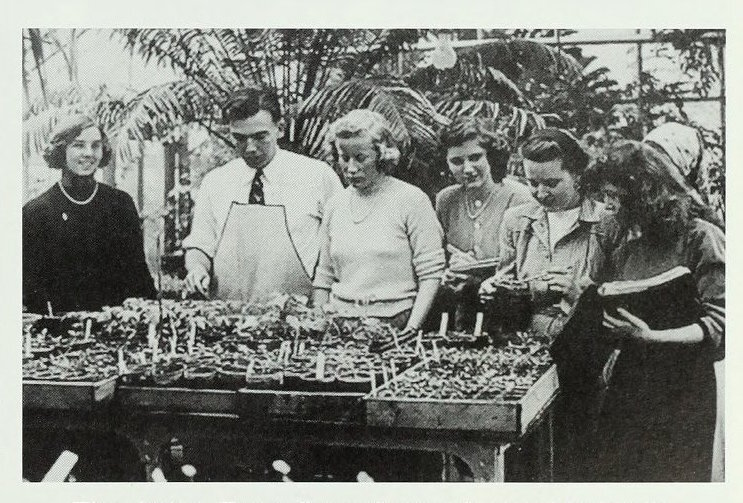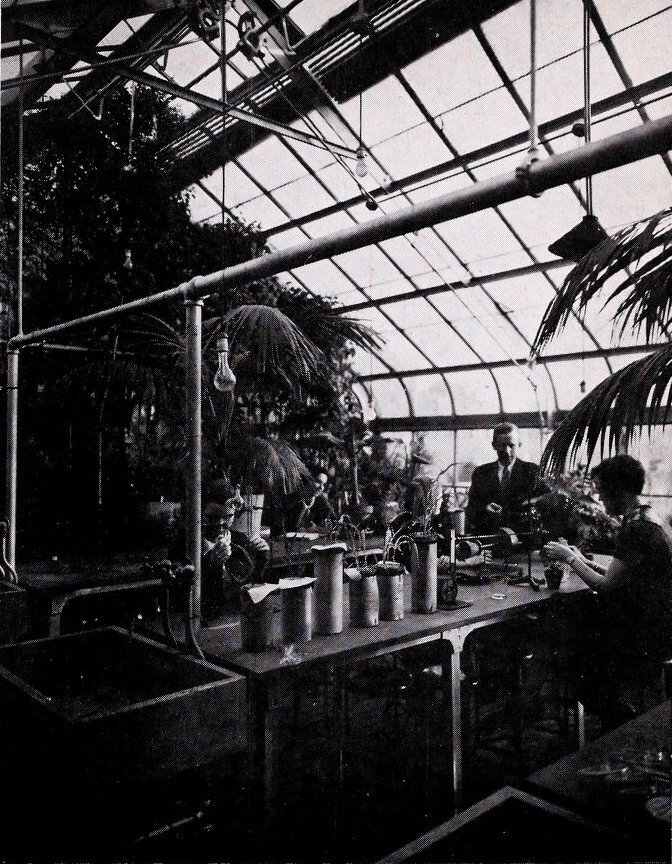A Dive into the Archive: The Arthur Ross Greenhouse
Admissions Fellow Sally Tuszynski ‘20 is spending the summer exploring Barnard’s Digital Collection to share histories of Barnard spaces. This post features Barnard’s Arthur Ross Greenhouse, which sits on the roof of Milbank Hall.
Supporting women in the sciences has been a fundamental value to Barnard College since its inception. Barnard’s first faculty member was botanist Emily Gregory, Ph. D, and Barnard’s first building, Milbank Hall, was built with a rooftop garden to equip young women with the knowledge of the natural sciences. Emily Gregory is credited with the successful development and excellent reputation of the botany department and went on to become the first dean of the College. The greenhouse remains an important site on campus to this day as the only greenhouse for the Barnard and Columbia community. The greenhouse has undergone two significant upgrades since Milbank’s construction between 1897 and 1898: in 1928 the greenhouse was replaced with a more elaborate facility and, thanks to Barnard trustee Arthur Ross’ $1 million donation, the greenhouse was significantly upgraded in 1997.
During the semester, students can visit the 3,400 square foot greenhouse on the fifth floor of Milbank Hall during open hours, which are from 1-3pm on Wednesdays. Additionally, the greenhouse serves as both a research facility and plant conservatory for professors and students alike. Students in biology, chemistry, and other STEM courses conduct experiments and observe plants in the greenhouse. The space is not solely used in the sciences, however, as english, art, and anthropology classes, among others, also use the greenhouse as a resource for writing, drawing, and discussions. At any given time the greenhouse has around 1,000 individual plants with around 450 different species of plants, an emphasis put on plants of cultural, medicinal, or culinary importance, or those with interesting adaptions to extreme environments. Climate is regulated in different rooms to simulate tropic and arid desert environments. The greenhouse is maintained by Nick Gershberg, Ann Whitney Olin Professor of Biological Sciences Hilary Callahan, and a few student workers.
The photos below feature Barnard students and professors working in the greenhouse throughout the twentieth century. More information about the Arthur Ross greenhouse can be found in this video, the Barnard Biology Department’s webpage, and on the greenhouse’s own Instagram page! Conduct your own archival research in Barnard’s Digital Collections here.
